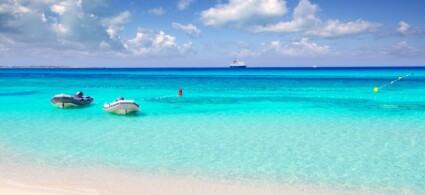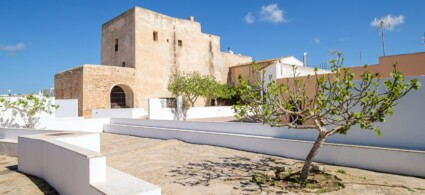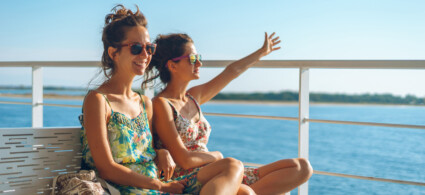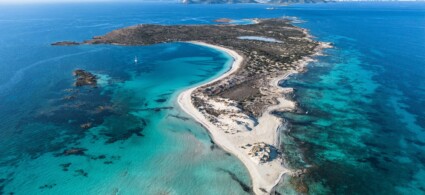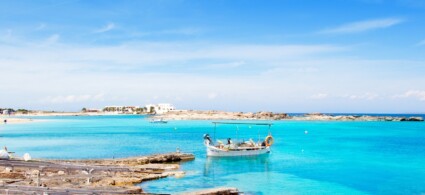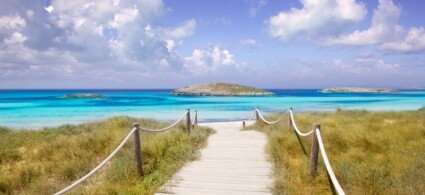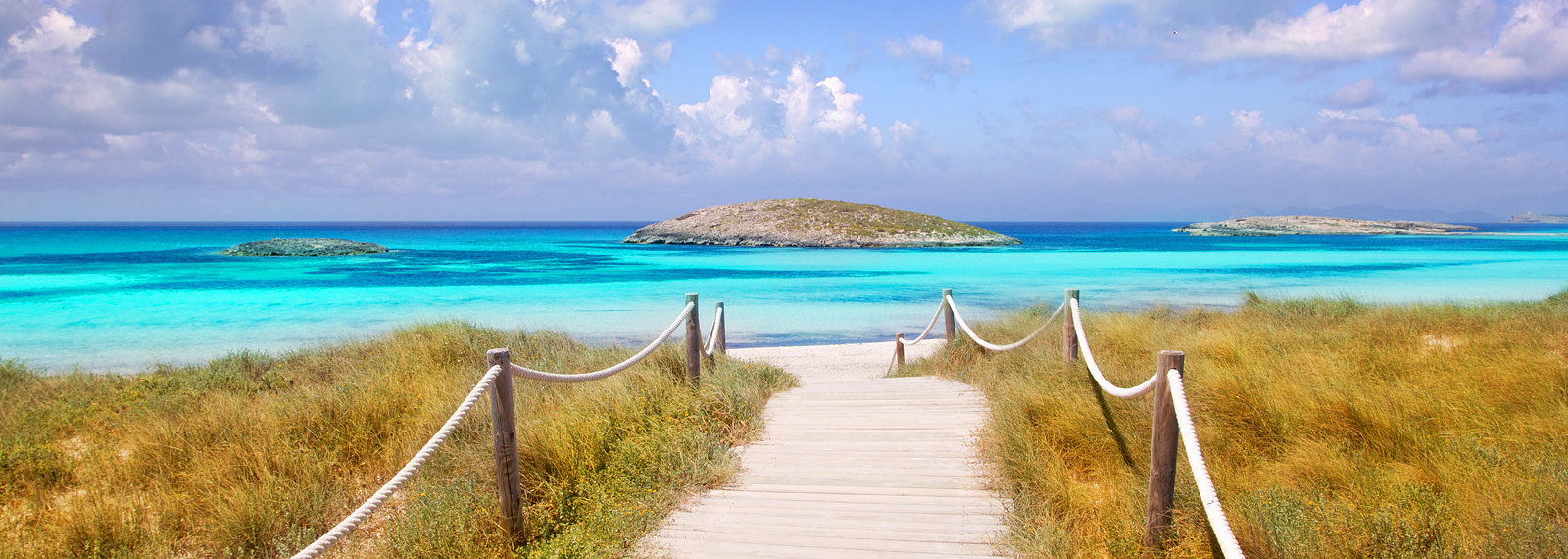

If you like nightlife and fun, islands like Ibiza and Majorca are probably better suited for you. The attractions and sights on Formentera are related to nature, the outdoors, traditions and the island’s history.
You will probably spend most of your holiday basking in the sun on one of Formentera’s beautiful beaches and diving into its crystal-clear sea: how can you blame yourself? These are heavenly beaches, so beautiful that no one would ever want to leave.
But also take a look at the hinterland of Formentera, a little-known world marked by striking lighthouses, windmills and stone walls, ancient buildings that proudly stand the test of time, perfectly integrated into the beautiful landscape.
Shall we talk about landscape? Formentera is not only beaches, but also salt marshes, lagoons, pine and juniper forests, to be explored on foot or by bicycle following one of the island’s signposted paths, always with a camera at hand, of course.
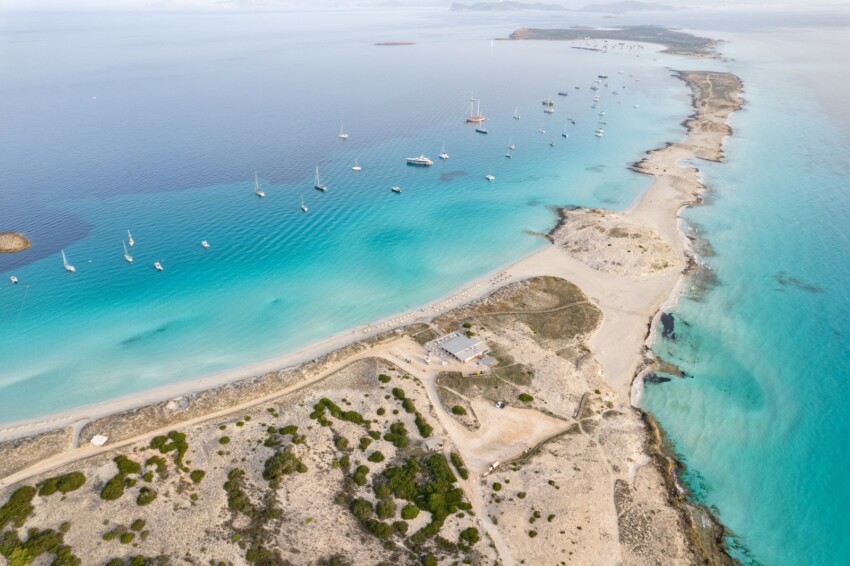
Formentera has a very rugged coastline where beautiful white sandy beaches and crystal-clear waters are no match for those in the Caribbean. Playa de Ses Illetes is Formentera’s most famous beach, an expanse of white sand bathed by a transparent sea reminiscent of a Caribbean postcard.
Then don’t miss Es Pujols, one of Formentera’s most popular resorts, with a wide sandy beach that is partly equipped and partly free, with access via a walk through the dunes.
Finally, Cala Saona is considered one of the most beautiful beaches on the island and is indeed a special beach where the colours of nature triumph: the blue of the sea, the green of the trees, the red of the cliffs. Set in a horseshoe-shaped bay, it is protected on the sides by reddish rock formations while behind it rises a pine forest. To this truly extraordinary visual impact the old fishermen’s boathouses, still in use today, add a touch of nostalgic romanticism.
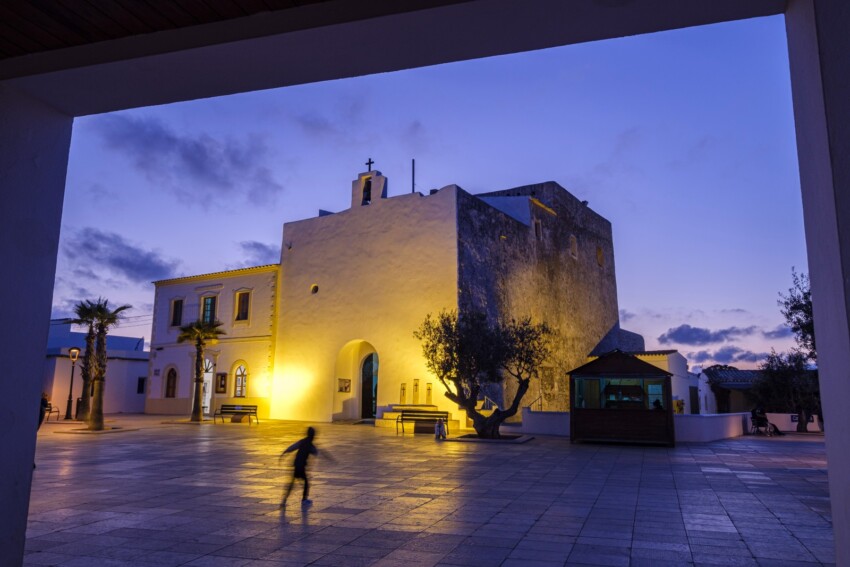
If you are on holiday in Formentera, put your beach life aside for a day and dedicate yourself to discovering the beauty of the island. You will discover small, perfectly preserved villages, natural beauty and evidence of the island’s past.
For example, if you are looking for an itinerary to discover the villages of Formentera, start from La Savina, where the ships from Ibiza or Denia dock, take the classic walk along the seafront and then head towards Sant Francesc Xavier, the largest town on Formentera and officially the capital. Only a few kilometres separate you from Sant Ferran de ses Roques, a reference point for the hippy movement of the 1960s, and from here, moving north, you will arrive in no time at all at Es Pujols, the island’s main tourist centre, with all its tourist-friendly amenities.
If, on the other hand, you are more interested in nature than in the villages of Formentera, head without hesitation to the Estany Pudent, a large salt lake in the north of Formentera where the salt pans are also located. Bathing is forbidden but you will be able to discover its biodiversity by walking or cycling along the equipped paths. You will also be able to spot numerous species of birds.
Finally, climb up to the small plateau of La Mola, the highest area on the island at 192 metres, and admire Formentera from above from the Belvedere, or Mirador, a very special stop, especially at sunset.
One of the best ways to explore the beautiful natural landscape of Formentera, an island that has remained immune to the disfigurements of mass tourism, is by hiking or cycling.
The local government has set up 32 walking and cycling routes called rutas verdes (green routes), which take you at a leisurely pace, stopping to admire the view whenever you wish, to all the island’s main locations, passing through villages, beaches, lagoons, cultivated fields, etc.
On your way you will see fascinating man-made constructions such as ancient stone walls, windmills and lighthouses, along with natural wonders such as sand dunes, cliffs and forests.
Some of these routes can be covered on foot or by bicycle, others are only recommended for walkers; the most famous of these nature trails is the Camì Vell de la Mola.
There are so many places to sleep in Formentera. It all depends on the type of holiday you intend to take and the budget you have available. We also advise you to book well in advance, as beds on the island are limited and demand, as you can imagine, is very high.
In the high season, it is easy for practically all facilities to sell out, resulting in underpriced accommodation. From small flats to resorts with spas, passing through hotels of every category and type – including beachfront ones – choose the establishment that best suits your holiday style and enjoy a dream overnight stay!
We offer a selection of hotels at Formentera to suit all categories of travellers. The most booked by tourists are the sea-facing hotels, often right on the beach. If you want to play it safe, choose one of the following: they are among the most booked hotels in Formentera, sorted by number of reviews.
If you prefer space, privacy and the ability to prepare your own meals to a hotel holiday, book a holiday home at Formentera. We recommend a few below, but in this case we advise you to book early because houses and apartments for rent at Formentera are in high demand.
Formentera is the smallest island of the Balearic archipelago and lies just 2 nautical miles from the southern coast of Ibiza; it does not have its own airport and to get there you must first take a flight to Ibiza and then board one of the many ships that connect the two islands. All routes are indicated on the Ferries to Formentera page.
Alternatively, from Spain there are several sea connections to Formentera from the ports of Barcelona, Valencia, Denia and Mallorca, without having to stop over in Ibiza.
What's the weather at Formentera? Below are the temperatures and the weather forecast at Formentera for the next few days.
Formentera is located in the Balearic Islands archipelago, immediately south of Ibiza and opposite the Spanish coasts of Valencia and Alicante in the Mediterranean Sea.
